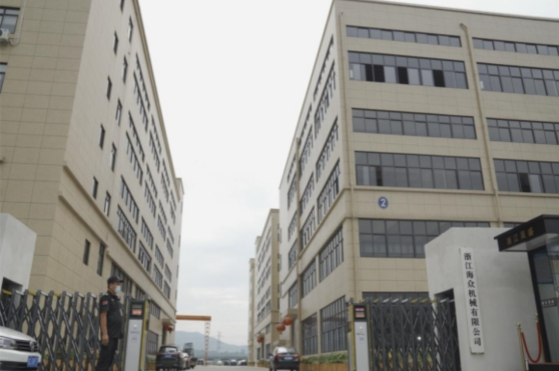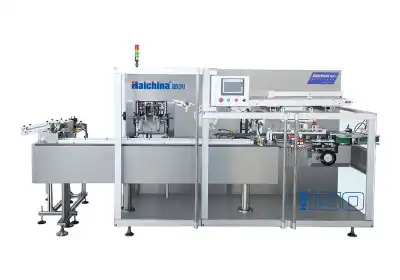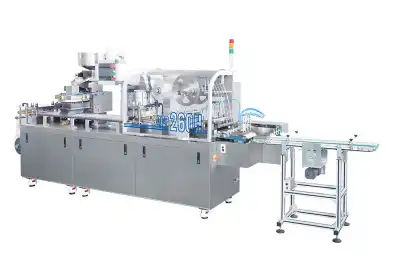Advantages and Disadvantages of Blister Packaging
Blister packaging has become a ubiquitous sight in various industries, from pharmaceuticals to consumer goods. This innovative packaging solution, produced using a blister packaging machine, offers a unique blend of protection, presentation, and convenience. However, like any packaging method, it comes with its own set of advantages and disadvantages. In this comprehensive guide, we'll explore the pros and cons of blister packaging, delving into its impact on product protection, consumer experience, and environmental considerations. Whether you're a manufacturer considering blister packaging for your products or a curious consumer, this article will provide valuable insights into this popular packaging technique and the machinery behind it.

The Fundamentals of Blister Packaging
What is Blister Packaging?
Blister packaging is a type of packaging that consists of a pre-formed plastic cavity or pocket, often referred to as the "blister," which is sealed onto a backing card. This method of packaging is widely used for small consumer goods, pharmaceuticals, and hardware items. The plastic blister is typically made from thermoformed plastic, while the backing can be paperboard, aluminum, or plastic film.

The Blister Packaging Process
The creation of blister packages involves several steps, typically carried out by specialized blister packaging machines. These machines form the plastic cavity, place the product inside, and seal it to the backing material. The process can be highly automated, allowing for efficient, high-volume production. Advanced blister packaging machines can handle various blister shapes, sizes, and materials, making them versatile tools in the packaging industry.

Industries Utilizing Blister Packaging
While blister packaging is perhaps most commonly associated with pharmaceutical products, its use extends far beyond this sector. Consumer electronics, toys, office supplies, and food products are just a few examples of items frequently packaged using this method. The versatility of blister packaging machines allows manufacturers to adapt this packaging style to a wide range of products, contributing to its widespread adoption across industries.

Advantages of Blister Packaging
Enhanced Product Protection
Blister packaging offers an exceptional level of product protection by creating a sturdy and secure barrier against physical impacts, moisture, dust, and other environmental contaminants. This protective quality, achieved through the use of a blister packaging machine, is essential for maintaining the efficacy and safety of pharmaceuticals, delicate electronics, and other sensitive items throughout transportation and storage. The sealed nature of the blister pack also ensures tamper-evidence, helping to prevent unauthorized access or contamination. This added security promotes consumer confidence and safeguards product integrity from manufacturer to end user.
Improved Product Visibility
One of the key advantages of blister packaging is its ability to showcase the product clearly through transparent plastic, allowing customers to examine the item without opening the package. This transparency increases consumer trust by enabling them to verify the product’s condition and appearance before purchase. In retail settings, the clear visibility acts as an effective marketing tool, attracting attention on crowded shelves and helping products stand out. Ultimately, this visual accessibility supports informed purchasing decisions and encourages impulse buying.
Customization and Branding Opportunities
Modern blister packaging machines enable manufacturers to tailor packaging shapes, sizes, and designs to precisely fit their products, enhancing both protection and presentation. The backing card offers a prime surface for vibrant branding, detailed product information, and promotional content, providing multiple touchpoints for customer engagement. This customization flexibility allows brands to differentiate themselves in competitive markets, create memorable unboxing experiences, and reinforce brand identity. Together, these factors contribute significantly to boosting product appeal and driving sales growth.
Disadvantages of Blister Packaging
Environmental Concerns
One of the most significant drawbacks of blister packaging is its environmental impact. The plastic used in blisters is often not biodegradable and can be challenging to recycle due to the combination of materials used. As environmental consciousness grows among consumers and regulators, this aspect of blister packaging has come under increased scrutiny. Some manufacturers are exploring more sustainable alternatives, but finding solutions that maintain the benefits of traditional blister packaging while reducing environmental impact remains a challenge.
Cost Considerations
Implementing a blister packaging system can involve significant upfront costs. High-quality blister packaging machines, while efficient and versatile, represent a substantial investment for manufacturers. Additionally, the ongoing costs of materials and potential customization can be higher compared to simpler packaging methods. For smaller businesses or those with low-volume production, these costs can be prohibitive.
Accessibility Issues
While blister packaging excels in product protection, it can sometimes be difficult for consumers to open. This is particularly problematic for elderly consumers or those with limited dexterity. The strong seals that protect products from tampering and damage can also frustrate end-users, potentially leading to negative experiences with the product or brand. Manufacturers must balance security and protection with ease of access when designing their blister packaging.
Conclusion
Blister packaging, produced using a blister packaging machine, offers a unique set of advantages and disadvantages that manufacturers must carefully consider. Its ability to protect products, enhance visibility, and provide customization options makes it an attractive choice for many industries. However, environmental concerns, cost factors, and accessibility issues present challenges that cannot be ignored. As packaging technology evolves, we may see innovations that address these drawbacks while maintaining the benefits of blister packaging. For now, manufacturers must weigh these pros and cons against their specific product needs and target market expectations to make informed packaging decisions.
Contact Us
For more information about blister packaging solutions and state-of-the-art packaging machinery, contact Zhejiang Haizhong Machinery Co., Ltd. at [email protected]. Our team of experts is ready to help you find the perfect packaging solution for your products.
References
Smith, J. (2022). "The Evolution of Pharmaceutical Packaging: A Focus on Blister Packs." Journal of Packaging Technology and Research, 15(3), 245-260.
Johnson, A., & Brown, T. (2021). "Consumer Perceptions of Product Packaging: The Role of Visibility and Protection." International Journal of Retail & Distribution Management, 49(2), 178-195.
Green, E. (2023). "Environmental Impacts of Common Packaging Materials: A Comparative Analysis." Sustainability Science, 8(4), 412-428.
Lee, S., & Park, K. (2022). "Innovations in Blister Packaging Machinery: Enhancing Efficiency and Flexibility." Journal of Packaging Science and Technology, 30(2), 89-104.
Wilson, M. (2021). "Accessibility in Product Packaging: Challenges and Solutions for an Aging Population." Design for Health, 5(1), 67-82.
Thompson, R. (2023). "The Economics of Packaging: Cost-Benefit Analysis of Various Packaging Methods." International Journal of Production Economics, 245, 108394.

Submit the form now to get a unique quote!

ZHEJIANG HAIZHONG MACHINERY CO., LTD.
Popular Blogs
-
 Successful caseProducts and services
Successful caseProducts and servicesHow to Train Employees to Operate a Bottle Packing Machine Effectively?
-
 Successful caseIndustry insights
Successful caseIndustry insightsThe Blister Packaging Process: A Complete Step-by-Step Guide
-
 Successful caseComparative analysisIndustry insights
Successful caseComparative analysisIndustry insightsWhat Type of PVC Is Best for Blister Packing Machines?